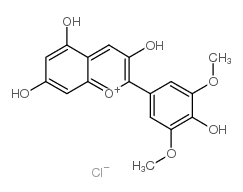| Structure | Name/CAS No. | Articles |
|---|---|---|
 |
Delphinidin chloride
CAS:528-53-0 |
|
 |
Pelargonidin chloride
CAS:134-04-3 |
|
 |
Malvidin chloride
CAS:643-84-5 |